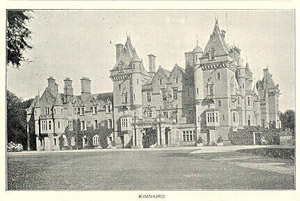WordPress database error: [Got error 28 from storage engine]
SELECT t.*, tt.*, tr.object_id FROM wp_terms AS t INNER JOIN wp_term_taxonomy AS tt ON tt.term_id = t.term_id INNER JOIN wp_term_relationships AS tr ON tr.term_taxonomy_id = tt.term_taxonomy_id WHERE tt.taxonomy IN ('category', 'post_tag', 'post_format') AND tr.object_id IN (19718) ORDER BY t.name ASC
Clan Carnegie History
The Carnegies took their name from the area around Carmyllie, Angus. The family who adopted this name however, were originally known under an earlier adopted placename of Balinhard which is also in Angus.
The Balinhards can be found in records from 1230. In 1358 John of Balinhard was granted the lands and barony of Carnegie by Walter de Maule. He became John the 1st of Carnegie and lived until 1370. John Carnegie of that Ilk was his successor and a direct family line ran from him until 1530.
It was in 1409 that Duthac of Carnegie acquired part of the lands of Kinnaird and an important Carnegie line developed in this area.
John of Kinnaird fought and died at Flodden in 1513. In 1547 his son Robert became a judge. He was taken prisoner during the Battle of Pinkie. When he was released he was knighted and made Scotland’s ambassador to France in 1556.
He was the first of the Carnegies to claim that his ancestors were the cup bearers to the Kings of Scotland. This royal office is remembered in the family arms which bear an ancient cup.
In 1616 Sir David Carnegie, 8th of Kinnaird, was made Lord Carnegie of Kinnaird. In 1633 he was created Earl of Southesk. The second Earl James was imprisoned by Cromwell for his Royalist beliefs. He was known as the ‘Black Earl’ because he learned magic at Padau.
Descending from a younger son of the 1st Earl of Southesk was Sir James Carnegie of Pittarrow, the distinguished soldier. In 1663 this line was created Baronets of Nova Scotia. During the Rising of 1715, Lord Southesk and Glengarry worked closely in the Jacobite Army.
The Carnegie tartan, based on the Glengarry tartan, was adopted in these times. The family seat today is at Kinnaird Castle in Angus.
Clan Carnegie Posts







